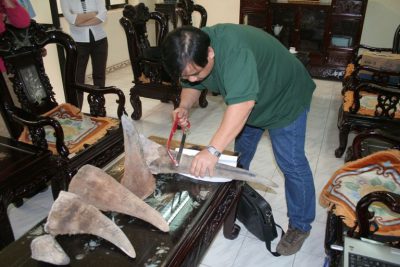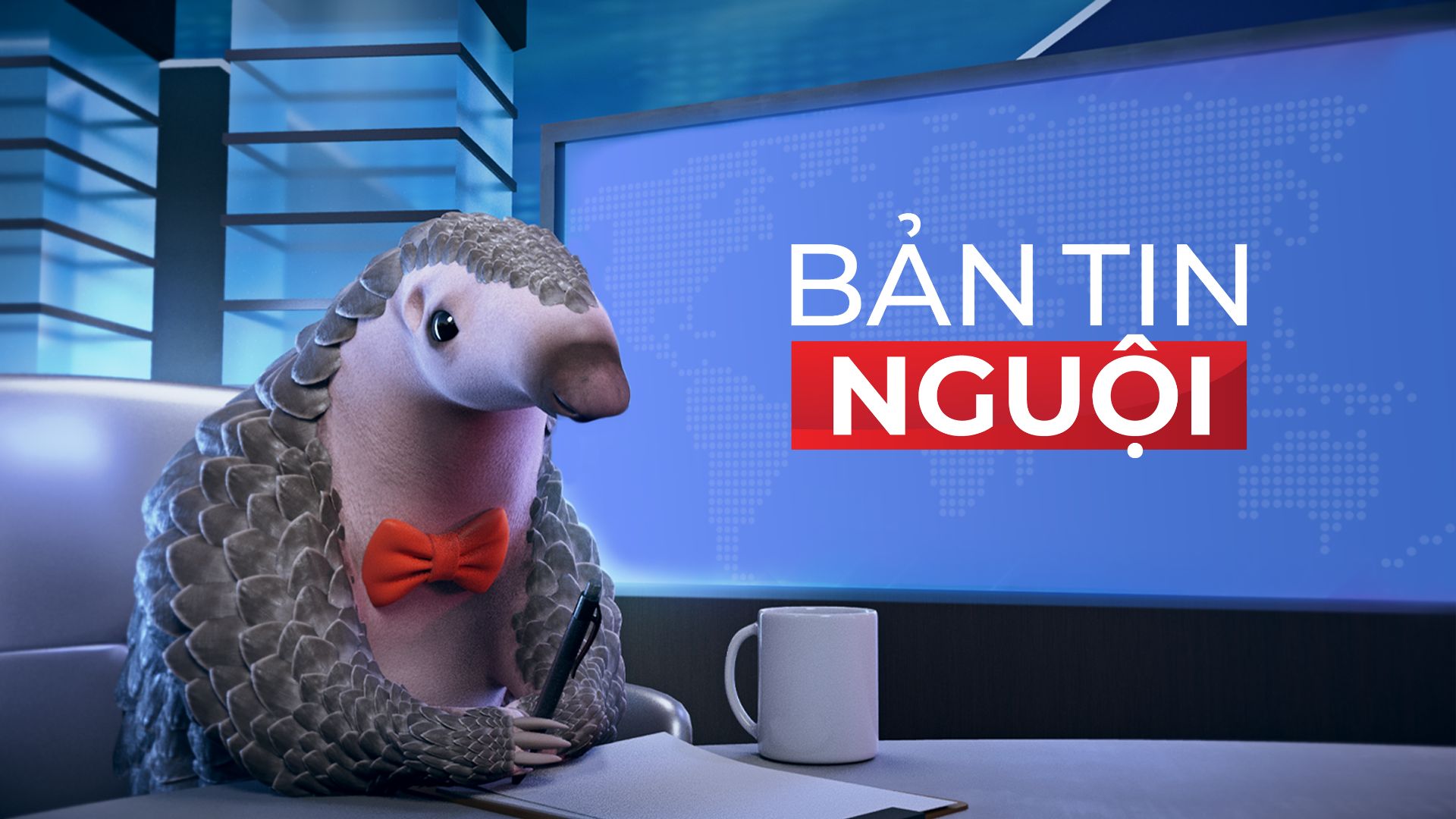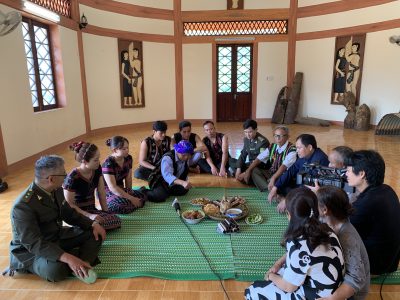INVESTIGATION AND PROSECUTION OF WILDLIFE CRIMES
Inspection is an important step in handling violations or cases related to wildlife trade to identify groups, species, parts and their status.
Over the past 10 years, Vietnam has seen a significant increase in illegal wildlife trade and consumption. One of the reasons why it is so difficult for law enforcement agencies to investigate and prosecute wildlife crimes is the lack of expertise needed to identify wildlife products that have been damaged. illegal trade or hunting and where they come from.
Thus, assessment is an important step in handling violations or cases related to wildlife trade to identify groups, species, parts and their status. At that time, the examiner will provide reliable scientific evidence for the competent agency to complete the case file. It can be seen that this is a necessary procedure that the authorities must carry out in the process of handling wildlife-related violations, especially in cases with criminal signs.
Regulations related to wildlife assessment
Vietnam has also issued a number of Laws and guiding documents such as: Criminal Procedure Law; Law on Judicial Assessment; Decree No. 82/2006/ND-CP on management of export, import, re-export, import from the sea, transit, breeding, rearing and artificial cultivation of animal species, endangered, precious and rare wild plants; Directive No. 28/2016/CT-TTg on a number of urgent solutions to prevent and fight against illegal acts of invasive wildlife… However, these documents do not clearly specify the contents of monitoring. Specimens of wild plants and animals.
According to the Law on Judicial Assessment of 2012 (amended and supplemented in 2018 and 2020), public judicial expertise organizations include: Institute of Criminal Science under the Ministry of Public Security; Criminal Technical Division of the Provincial Police; The Criminal Technical Examination Division belongs to the Ministry of National Defense and a number of other judicial expertise organizations specializing in forensic medicine and forensic psychiatry.
In addition, every year ministries, branches and provincial-level People’s Committees also select, compile and publicize a list of a number of organizations and judicial expertise experts with appropriate expertise to carry out expertise requests in the field. some specific areas. In special cases, individuals and professional organizations that are qualified but are not on the published list may still be solicited to carry out the assessment, but the reasons must be clearly stated.
According to Decree No. 06/2019/ND-CP on the management of endangered, precious and rare forest plants and animals and the implementation of the Convention on International Trade in Endangered Species of Wild Fauna and Flora (edit) Amended and supplemented by Decree No. 84/2021/ND-CP), the CITES Scientific Authority of Vietnam is the agency to assess CITES specimens. Accordingly, Decision No. 2249/QD- BNN-TCLN dated June 17, 2020 of the Ministry of Agriculture and Rural Development has designated four agencies as the Vietnam CITES Scientific Authority, of which two are specialized agencies. The subjects for wildlife assessment are the Institute of Ecology of Resources and Organisms (in the field of Animals and Aquatic life) and the Institute of Seafood Research (in the field of Aquatic life).

Taking samples for assessment of rhino horn in Hanoi
The process of identification of wildlife species
Currently, there are no specific standards for wildlife identification prescribed in current legislation. However, two methods of species identification have been used by CITES Scientific Agencies: morphological identification and molecular analysis (AND).
Morphological method: Species identification is based on morphological features, for intact or relatively intact specimens. This method is highly effective, less expensive and does not require much time, meeting the requirements of the authorities when handling the case. However, this method still has some shortcomings such as the increasing number of animals and plants seized, the area of operation of the violators is wide, they are very diverse, but the number of qualified officers is still limited. Good assessment is thin (limited staff), the expertise of the staff is very narrow, so it is not possible to meet all groups of species and reach all locations at once. On the other hand, now that Vietnam is open to all partners, the number of international trade in wild animals and plants has increased significantly. Many species of animals and plants are not distributed in Vietnam, so sometimes they cannot be identified in place, but it takes time to look up documents. At present, the situation of counterfeiting of specimens has become common, causing many difficulties for the assessment through morphological characteristics, especially when conducting assessment through photographs.
Analytical methods using molecular techniques: The method of genetic analysis to identify species is now quite popular in the world. In Vietnam, this method has also been applied, but not widely, but only focused on a few large scientific institutions such as the Institute of Ecology and Biological Resources. This method requires the laboratory to have modern equipment such as PCR machines or sequence readers, but the most important thing is to have a team of qualified staff to use machines and genetic analysis. , identify species or groups of species accurately and have sufficient knowledge in taxonomy. In addition, this method is very expensive, requires high cost (a sample to read the sequence costs VND 2.5-3.0 million) and takes 7-10 days. Using DNA analysis can lead to absolutely accurate conclusions, but it takes a long time and this method is usually only applied to too complex samples. Therefore, the assessment work is still highly dependent on the assessors.
Usually, morphological examination is performed by the inspection agencies first. If the species can be identified through morphological examination, it is not necessary to carry out DNA analysis. Morphological examination can be done through direct contact with individual animals or their products, or indirectly through images sent by relevant authorities, especially for animals. the case of live animals. When it is not possible to draw conclusions on species identification through morphological methods, as is the case with wildlife products (e.g. rhino horn, ivory and pangolin scales), analysis will be required. DNA accumulation. DNA analysis will cost more and take longer to get results (usually two weeks).
However, through the investigation, prosecution and trial of this type of crime, it shows that a number of regulations and procedures related to the assessment and handling of physical evidences for wildlife currently face many difficulties and obstacles. Problems and inadequacies make the efficiency of assessment and handling of evidences not high and not much support for the investigation and handling of infringements in wildlife trade, endangered, precious and rare illegally in Vietnam.
Most localities currently do not have assessors, except for a few provinces that have judicial expertise according to cases. Therefore, when the case is discovered, the confiscation of exhibits takes a lot of time for the case resolution process because it has to wait for the results of the examination. For DNA examination, specimens must be sent to the authorities, so the enforcement agencies face many difficulties in the preservation of exhibits, transportation and care costs (for living individuals). Currently, there are no clear regulations on which evidences are living wildlife species will be cared for and rescued by any agency before the conclusion of the assessment is made.
Currently, the coordination mechanism is still not synchronized between management and law enforcement agencies such as police force, forest ranger, customs and scientific agencies. In Decree No. 32/2006/ND-CP, Article 14 stipulates four scientific agencies of CITES. The duties of the scientific institutions are the same, so in order to solicit expertise, the management agencies can send it to one of the scientific institutions and the results of the assessment of one of the agencies can be used in other scientific institutions. violation handling.
However, the results of the referendum and the assessment results of one agency have not been provided to other agencies for reference and statistics, so the number of appraisal cases has not been uniform and complete. Regulatory agencies and law enforcement agencies also do not have much information about CITES scientific agencies, so it is difficult to send expertise requests.
The number of species and species groups is very diverse and abundant, the number of experts of scientific agencies is still thin, an agency can hardly undertake the appraisal of all cases, of all species groups, so if the solicitation is not professionally qualified, it will affect the processing work as the time may be extended. In addition, there are difficulties and obstacles such as some overlapping provisions of the law; sanctions, inspection, examination and handling of violations on biodiversity are still inadequate; funding is still limited; Species identification is also problematic.
Recommendations and solutions
To serve the investigation of violations in illegal wildlife trade, to meet the requirements of state management agencies and law enforcement agencies, we would like to propose some request:
Amend the Law on Judicial Assessment in the direction of legalizing the assessment of wildlife specimens; develop a general guideline framework on wildlife assessment process, and issue specific guidelines for some common specimens such as ivory, rhino horn, pangolin scales…
There should be a coordination mechanism in the assessment and handling of violations between scientific agencies and management agencies, clearly defining the responsibilities of each agency in soliciting expertise.
Organize intensive training in the field of animal identification for management agencies, law enforcement and scientific agencies.








